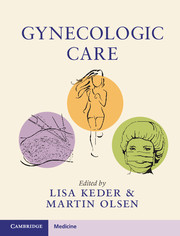Book contents
28 - Radiation Oncology
from Section 5 - Gynecologic Oncology
Published online by Cambridge University Press: 01 February 2018
Summary
Introduction
All living things come in contact with radiation; most radiation exposure does not cause harmful complications. Certain types of radiation, specifically ionizing radiation, provide useful interventions in cancer treatment. This type of radiation provokes cellular injury from which normal tissue recovers more effectively than malignant tissue.
Radiation may be provided from isotopes such as radium, iridium, and cesium. Machines such as the linear accelerator or the betatron also create therapeutic forms of radiation which are important in cancer management. Terms used in the discussion of radiation are defined in Box 28.1. This chapter will describe treatment mechanisms and complications of radiation therapy in gynecologic malignancies. Cervical and endometrial cancers are the most commonly treated gynecologic cancers, but radiation also has a role in the management of leiomyosarcoma and vulvar cancers. There is no role for radiation therapy in the management of ovarian cancers due to the effects of radiation on the bowel.
Box 28.1 Terms Used in Discussion of Radiation
X-rays – a form of electromagnetic radiation. X-rays are emitted by electrons.
Gamma rays – these radiations originate from the decay of an atomic nucleus. The wavelengths of gamma rays are typically longer than the wavelengths of x-rays, but some types of gamma rays used in radiation therapy are also referred to as x-rays.
Photon – the elementary particle of ionizing radiation. Gamma rays and x-rays are both considered photons.
Ionization – this process occurs when an atom or proton gains or loses an electron; it thus forms an ion and becomes either negatively or positively charged.
Ionizing radiation – a form of radiation that is harmful to living tissue because it disrupts molecular bonds through the process of ionization.
Scope of the Problem
The most common gynecologic cancers treated by radiation therapy are cervical cancer and endometrial cancer. In early stages, surgery alone may be selected while in other stages the patient may be treated with a combination of surgery and radiation therapy, or with both chemotherapy and radiation. In the most advanced cases, radiation therapy may be used alone. The effects on normal surrounding tissues usually limit the dose of radiation. The sigmoid, the recto sigmoid, and the rectum are the most susceptible pelvic organs to radiation injury. The small bowel also limits radiation dose.
- Type
- Chapter
- Information
- Gynecologic Care , pp. 271 - 278Publisher: Cambridge University PressPrint publication year: 2018



